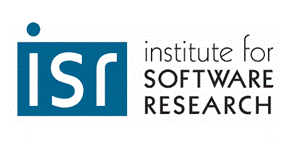
Institute for Software Research
School of Computer Science, Carnegie Mellon University
Competitive Adaptation in Terrorist Networks:
Differences Between the Al-Muhajiroun and the Irish Republican Army
Abhinav Sangal, Kathleen M. Carley, Michael K. Martin
August 2012
Revision May 2020
Center for the Computational Analysis of Social and Organizational Systems
This document supersedes Institute for Software Research
CASOS Technical Report
Technical Report CMU-ISR-12-110
Competitive adaptation refers to how adversaries such as terrorist groups and government counterterrorism agencies learn and adapt behavior based on behavior of the other. Using significant events as guides, studying the adaptation will identify and characterize how groups will evolve.
For analyzing the difference in adaptations and changes, we used the Competitive Adaptation for Terrorist Networks (CATNET) data. In this paper, we analyze the differences in the adaptations between two terrorist groups by generating meta-networks in the text mining tool AutoMap and using the network analytics tool ORA . One of the groups is Al-Muhajiroun (AM) and the other terrorist group is Irish Republican Army (IRA). Al-Muhajiroun is a banned terrorist group which was based in Britain. The Irish Republican Army (IRA) was an Irish republican revolutionary organization, which came into existence in the early 20th century.
We performed network text analyses to find key agents and organizations that are most closely connected to adaptation keywords in the narratives used by journalists, the public or group members to describe the terrorist groups. We demonstrate how the adaptation picture is different for sources from journalists (e.g., news articles) and sources that involve either opinions of the general public or the groups themselves (e.g., interviews and court cases). The agents and organizations that are central to adaptation for both the AM and IRA groups are discussed. Finally, we discuss how the two terrorist groups differ from each other and how the people in both groups are re-organized around adaptation concepts.
38 pages
Return to:
SCS Technical Report Collection This page maintained by reports@cs.cmu.edu
School of Computer Science